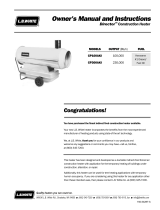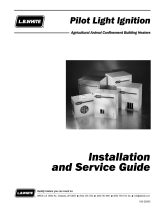
2
Regulations and guidelines
Logamax plus GB162-L.B. 80 kW / 100 kW – 6720645916 (2014/10)6
General warnings
The following instructions must be observed
• The boiler must only be used for its designated purpose, observing
the Installation Instructions.
• Only use the boiler in the combinations and with the accessories and
spares listed.
• Maintenance and repairs must only be carried out by trained
professionals.
• You are only permitted to operate the condensing gas boiler with the
combustion air/flue gas system that has been specifically designed
and approved for this type of boiler.
• Please note that local approval of the flue system and the condensate
connection to the public sewer system may be required.
• If boiler installation is provided as replacement heater, do not
connect new boiler venting to an existing vent system, if it is shared
with other appliances.
• The local building regulations stipulating the installation rules at the
time of installation.
• The local building regulations concerning the air intake and outlet
systems and the chimney connection.
• The regulations for the power supply connection.
• The technical rules laid down by the gas utility company concerning
the connection of the gas burner fitting to the local gas main.
• The instructions and standards concerning the safety equipment for
the water/space heating system.
• The Installation Instructions for building heating systems.
• The boiler must be located in an area where leakage of the tank or
connections will not result in damage to the area adjacent to the
boiler or to lower floors of the structure. When such locations cannot
be avoided, it is recommended that a suitable drain pan, adequately
drained, be installed under the boiler. The pan must not restrict
combustion air flow.
• The boiler must be installed such that the gas ignition system
components are protected from water (dripping, spraying, rain etc.)
during boiler operation and service.
• Do not restrict or seal any air intake or outlet openings.
• If you find any defects, you must inform the owner of the system of
the defect and the associated hazard in writing.
• The boiler must not be installed on carpeting.
What to do if you smell gas:
• Do not try to light any boiler.
• Do not touch any electrical switch; do not use any phone in your
building.
• Immediately call your gas supplier from a neighbor’s phone.
Follow the gas supplier’s instructions.
• If you cannot reach your gas supplier, call the fire department.
2 Regulations and guidelines
• The installation must conform to the requirements of the authority
having jurisdiction or, in the absence of such requirements, to the
National Fuel Gas Code, ANSI Z223.1/NFPA 54 and/or CAN/CSA
B149.1, Natural Gas and Propane Installation Code.
• Where required by the authority having jurisdiction, the installation
must conform to the Standard for Controls and Safety Devices for
Automatically Fired Boilers, ANSI/ASME CSD-1.
▶ Install CO detectors per local regulations. Boiler requires yearly
maintenance chap. 12 "Maintenance", page 43.
Operating Limits of the boiler:
Max. boiler temperature: 230 °F (110 °C)
Max. operating pressure: 30 psi (2.6 bar)
- with optional pressure relief valve 50 psi (3.45 bar).
The hot water distribution system must comply with applicable codes
and regulations. When replacing an existing boiler, it is important to
check the condition of the entire hot water distribution system to ensure
safe operation.
2.1 Massachusetts Installations Only
(a) For all side wall side horizontally vented gas fuelled equipment
installed in every dwelling, building or structure used in whole or in part
for residential purposes, including those owned or operated by the
Commonwealth and where the side wall exhaust vent termination is less
than 7 feet above finished grade in the area of the venting, including but
not limited to decks and porches, the following requirements shall be
satisfied:
1. INSTALLATION OF CARBON MONOXIDE DETECTORS. At the time of
installation of the side wall horizontal vented gas fueled equipment,
the installing plumber or gas fitter shall observe that a hard wired
carbon monoxide detector with an alarm and battery back-up is
installed on the floor level where the gas equipment is to be installed.
In addition, the installing plumber or gas fitter shall observe that a
battery operated or hard wired carbon monoxide detector with an
alarm is installed on each additional level of the dwelling, building or
structure served by the side wall horizontal vented gas fueled
equipment. It shall be the responsibility of the property owner to
secure the services of qualified licensed professionals for the
installation of hard wired carbon monoxide detectors
– In the event that the side wall horizontally vented gas fueled
equipment is installed in a crawl space or an attic, the hard wired
carbon monoxide detector with alarm and battery back-up may
be installed on the next adjacent floor level.
– In the event that the requirements of this subdivision can not be
met at the time of completion of installation, the owner shall have
a period of thirty (30) days to comply with the above
requirements; provided, however, that during said 30 day
period, a battery operated carbon monoxide detector with an
alarm shall be installed. alarm and battery back-up may be
installed on the next adjacent floor level.
WARNING:
Dangerous flue gas can escape if the air supply is
insufficient.
▶ Make sure that air vents are not reduced in size or
obstructed.
▶ The boiler may only be operated after the defect has
been remedied.
▶ Warn the user of the system of the defect verbally
and in writing.
WARNING:
Danger of fatal accident from explosive fumes.
▶ Only carry out work on gas pipes and fittings if you
are properly registered.






















